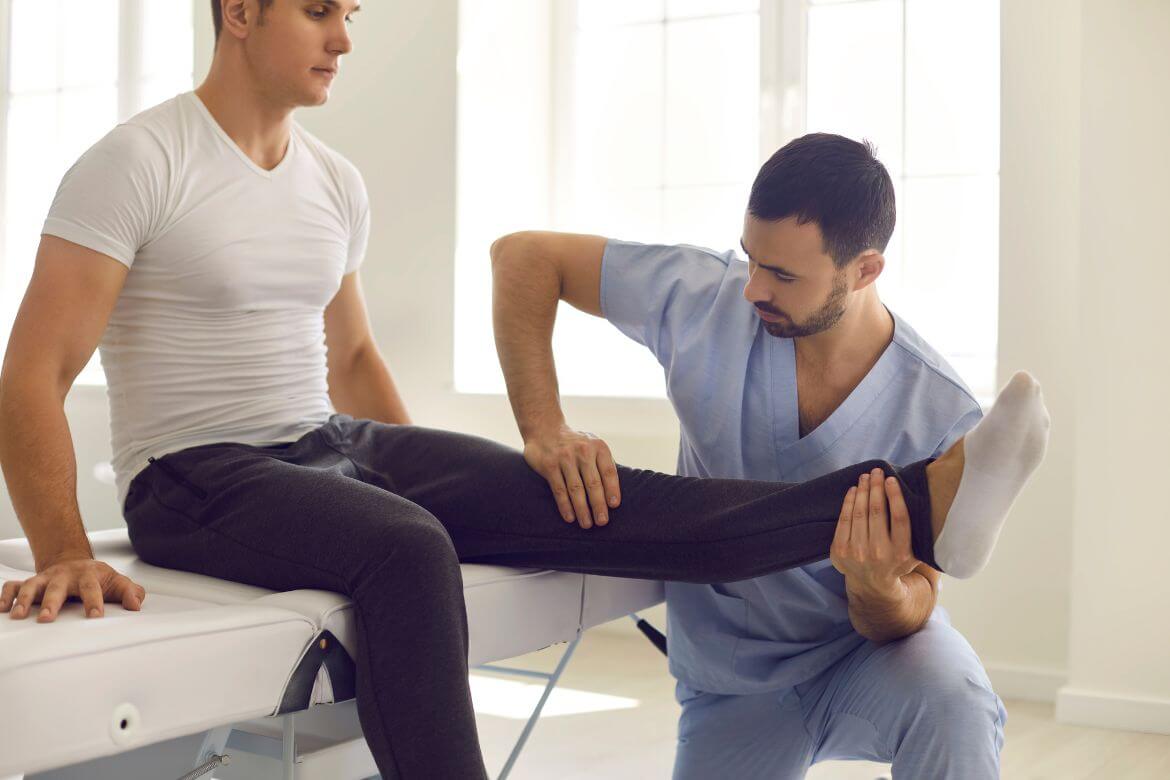
Orthopedic rehabilitation is a crucial part of recovery for individuals dealing with musculoskeletal issues. Whether recovering from surgery, an injury or managing a chronic condition, understanding orthopedic rehabilitation can help you navigate your path to recovery more effectively. This guide aims to provide a clear, personalized overview of orthopedic rehabilitation, covering its importance, components, and benefits.
What Is Orthopedic Rehabilitation?
Orthopedic rehabilitation is a specialized field of physical therapy focused on restoring function, improving mobility, and reducing musculoskeletal pain, including bones, joints, muscles, ligaments, and tendons. Orthopedic rehabilitation aims to help individuals recover from injuries or surgeries, manage chronic conditions, and enhance overall physical function.
Why Is Orthopedic Rehabilitation Important?
Orthopedic rehabilitation plays a vital role in:
- Recovery from Injury or Surgery: After an injury or surgery, the body needs time and proper care to heal. Rehabilitation helps to restore function, reduce pain, and prevent complications.
- Pain Management: Targeted rehabilitation exercises and techniques can more effectively manage chronic pain conditions like arthritis.
- Improving Mobility and Strength: Rehabilitation helps to regain strength, flexibility, and mobility that may be lost due to injury or surgery.
- Preventing Future Injuries: By improving strength and flexibility, rehabilitation can help prevent injuries or complications.
Key Components of Orthopedic Rehabilitation
Orthopedic rehabilitation is a multifaceted process involving various components tailored to the individual’s needs. Here are some key aspects:
- Assessment and Diagnosis:
- Initial Evaluation: The process begins with a thorough physical therapist or orthopedic specialist assessment. This evaluation includes understanding your medical history, current symptoms, and functional limitations.
- Diagnostic Tests: Depending on your condition, X-rays, MRIs, or CT scans may be used to get a clearer picture of the issue.
- Treatment Plan:
- Customized Exercises: A personalized exercise plan is created to improve strength, flexibility, and range of motion. Exercises are designed based on your specific condition and goals.
- Manual Therapy: Techniques like massage and joint mobilization may relieve pain and improve function.
- Modalities: Various modalities, such as heat, ice, ultrasound, or electrical stimulation, can help manage pain and promote healing.
- Education and Self-Care:
- Patient Education: Understanding your condition and the importance of rehabilitation exercises is crucial. Education helps you take an active role in your recovery.
- Home Exercises: Your therapist will likely provide exercises to perform at home, ensuring that progress continues between sessions.
- Functional Training:
- Activity Modification: It is important to learn to modify daily activities to prevent setbacks and avoid stress on the injured area.
- Functional Exercises: Exercises that mimic daily activities help improve your ability to perform routine tasks.
- Progress Monitoring and Adjustments:
- Regular Check-Ins: Frequent follow-up sessions allow your therapist to monitor progress and adjust your treatment plan.
- Outcome Measures: Assessing progress through outcome measures helps determine the effectiveness of the rehabilitation program.
Common Orthopedic Conditions Treated with Rehabilitation
Orthopedic rehabilitation can address a variety of conditions, including:
- Fractures: Rehabilitation helps restore strength and mobility after bone fractures, ensuring proper healing and function.
- Joint Replacements: Post-surgery rehab for joint replacements (e.g., hip or knee) focuses on regaining strength and movement.
- Ligament Injuries: Conditions like ACL tears benefit from rehabilitation to restore stability and function.
- Tendinitis: Rehabilitation can relieve pain and inflammation associated with tendinitis through targeted exercises and treatments.
- Arthritis: Rehabilitation for arthritis aims to manage pain, improve joint function, and enhance quality of life.
How to Get Started with Orthopedic Rehabilitation
Starting orthopedic rehabilitation involves several steps:
- Consult Your Physician: Speak with your doctor to determine if orthopedic rehabilitation is appropriate for your condition. They may refer you to a physical therapist or rehabilitation specialist. If you’re dealing with orthopedic pain and seeking effective treatment in Pune, The Physio9 Clinic offers expert orthopedic rehabilitation to help you achieve your best health. Our specialized care is designed to address your pain and promote recovery. Choose us for best orthopedic rehabilitation in Pune.
- Find a Qualified Therapist: Look for a licensed physical therapist or orthopedic rehabilitation specialist with experience treating your condition.
- Attend Initial Evaluations: Your therapist will conduct an initial evaluation to develop a personalized treatment plan based on your needs.
- Commit to the Program: Follow your treatment plan diligently, including attending scheduled therapy sessions and performing home exercises.
- Stay Motivated: Rehabilitation can be challenging, but staying motivated and consistent is key to achieving the best results.
Conclusion
Orthopedic rehabilitation is fundamental to recovering from musculoskeletal issues, managing chronic conditions, and improving overall physical function. Understanding its components and benefits can help you better navigate your recovery journey. If you or someone you know is dealing with an orthopedic condition, consider seeking the guidance of a qualified rehabilitation specialist to support your path to recovery.
Remember, each individual’s journey through orthopedic rehabilitation is unique. Still, with the right approach and support, you can recover and return to your daily activities with greater strength and confidence.







